You can remove Confederate statues and still remember history
When someone does something great, remarkable, wins a battle or sports championship, among other qualifications, we build them a statue. And the U.S. sure does like statues and monuments — whether we built them or were gifted them.
However, despite the number of great statues and monuments the U.S. has like the Statue of Liberty, Rocky Balboa, USS Arizona Memorial and The National 9/11 Memorial & Museum, to name a few, there are just as many problematic ones which celebrate people apart of America’s problematic history. That is where Confederate statues come in.
According to an article from History, the US has over 700 Confederate monuments. Now is it just me — it is not — that feels like 700+ monuments is a bit extreme to commemorate one of the many wars the US has found itself in and the losing side nonetheless? I could understand a few but over 700 only exemplifies the problematic history America has with race, specifically the mistreatment of Black people.
The Southern Poverty Law Center (SPLC), “Whose Heritage” report found that 1,747 Confederate symbols (statues, flags, names of roads, schools, parks, buildings, etc…) still stand — 114 have been removed since the 2015 shooting of nine Black individuals at a church in Charleston, S.C. by Dylann Roof, a white man.
Memorials and monuments typically mourn those who have died, but instead many of the Confederate statues celebrate Confederate generals and soldiers from the Civil War, not all of who died as a result of the war.
Instead of being placed in cemeteries where statues and memorials would have previously been erected, these new celebratory statues found their way into the center of cities, typically in the South, in front of prominent buildings like museums, capitol buildings and city squares.
University of North Carolina Greensboro history professor, Mark Elliott, told History that most of these Confederate statues were built many years after the Civil Wars ended in 1865. Elliot said, “1890s and 1950s, which matches up exactly with the era of Jim Crow segregation.”
The era of Jim Crow laws was a time where states and local towns enforced laws that legalized segregation. Jim Crow laws were in place post Civil War up until 1968.
Seeing a surge in Civil War statues and monuments celebrating generals and soldiers during this time seems like no surprise given the uptick in hate and mistreatment of Black Americans.
Now more than ever people are pushing for the removal of Confederate statues, whether it be through means of their own force or in partnership with their city.
Since the reignition of Black Lives Matter protests around the U.S., many Confederate statues have been defaced with graffiti, broken or forcefully taken down by protesters.
And they do need to be removed.
Wilmington is home to its fair share of Confederate Statues like the Confederate soliders on Third Street and the one of George Davis at the intersection of Third and Market Streets.
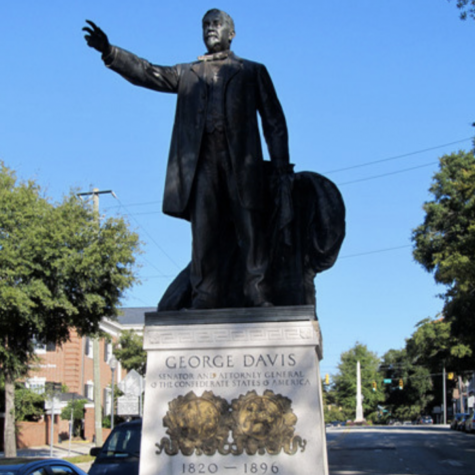
On June 20, Wilmington Mayor Bill Saffo also issued a curfew surrounding those two statues in order to combat vandalism. The official City of Wilmington, NC Government Facebook page released the following post.
“Effective immediately and lasting overnight (7:30 pm until 7:00 am) for five nights or until otherwise noted, there is a curfew on pedestrian activity in the street and median of Market Street between 3rd St and 5th Avenue and the median of 3rd St between Market and Orange Streets. This is to prevent incidents in the vicinity of the monuments. Foot traffic is allowed on the sidewalk. Thank you.”
As of June 25, both statues have been temporarily removed as reported by The Seahawk and WWAY.
It is unclear how long they will be removed, where they are currently being kept and where they could be moved to, but the move was done in order to protect the public’s safety. However, a decision will be made with the help of the state and city, according to a statement released by The Historic Wilmington Foundation.
Afterward, the city released the following statement.
“In accordance with NC law, the city has temporarily removed two monuments from the downtown area. This was done in order to protect the public’s safety and to preserve important historical artifacts.”
The law they are referring to is a North Carolina General Statute “(G.S. 100-2.1) § 100-2.1. Protection of monuments, memorials, and works of art” which states that “a monument, memorial, or work of art owned by the State may not be removed, relocated, or altered in any way without the approval of the North Carolina Historical Commission.”
Subsections of this G.S. break down exceptions and provide further reasoning as to how and when statues and monuments can be removed.
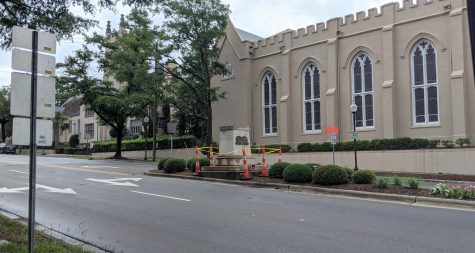
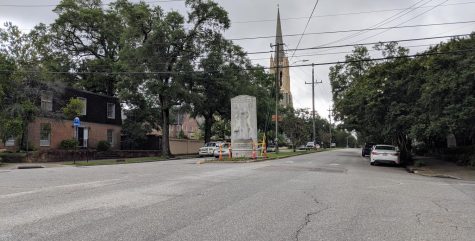
Other cities like Charleston, S.C.; Frankfort, K.Y.; Richmond, V.A.; Decatur, G.A.; and Mobile, A.L. are just a few of the towns listening to requests for removal of Confederate statues.
Meanwhile, critics like President Donald Trump and others, make claims like “but how will we learn about these people and the Civil War,” “you are erasing history” and “they are not racially motivated.”
On June 26, the president signed an executive order which serves to protect federal monuments and statues and prosecute individuals who damage them.
“Individuals and organizations have the right to peacefully advocate for either the removal or the construction of any monument. But no individual or group has the right to damage, deface, or remove any monument by use of force,” the order states.
There are still many other ways to learn about the Civil War and specifically the Confederacy instead of prominently displaying statues celebrating them. Removing a statue or monument does not erase history, we will never be able to forget the atrocities of the Civil War and specifically of the Confederacy.
And to anyone who thinks Confederate statues are not racially motivated are dead wrong. Like I mentioned earlier these statues and monuments were built in the years following the Civil War during times of Jim Crow which were specifically created to suppress, intimidate, segregate and make Black Americans feel less than White Americans.
We learn about the Civil War in our history classes — albeit not perfect and there needs to be a new approach to how this is taught in classrooms — and through documentaries and movies. We learn through books and stories passed on from previous generations. We learn from museums and exhibitions. We learn from reenactments in cities home to famous battles.
One idea that has been floated around is removing the Confederate statues and placing them in private museums so people can still see and learn about them, without them being prominently displayed in public areas where it does not feel appropriate anymore.
Although, I am curious about how many of the people opposed to removing Confederate statues actually visit them on a regular basis and would make the effort to visit them in a museum since they are just so important to them.
Padma Lakshmi, a Top Chef host, tweeted “Germany doesn’t have Nazi monuments to “remind” citizens of their history. Instead, they have memorials for the 6 million Jews and others who were murdered. The U.S. doesn’t need statues of confederate generals to “remind” us. We need monuments for Nat Turner & Harriet Tubman.”
America could learn a thing or two from other countries around the world who have also had problematic statues that were eventually removed.
Last year I visited Germany, Austria, Hungary and the Czech Republic. All of these countries played a role and or were affected by World War II. During a walking tour of Prague, I found that they especially did a wonderful job of acknowledging their history of World War II without glorifying Natzi’s or the role of leaders like Hitler and Stalin. Instead, they had various monuments for the Jewish people who had died at the hands of the Nazi’s.
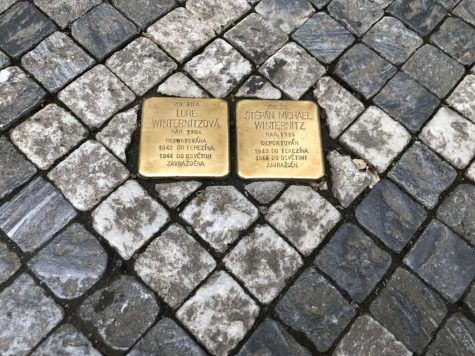
The tour guide informed us that Prague also has a Metronome statue, which was erected in 1991 following the removal of a statue of former Soviet leader Joseph Stalin in 1962. And former Soviet leader Nikita Khrushchev was the one who ordered the statue be removed — through dynamite nonetheless.

Germany followed suit after its loss in World War II by removing public statues and other symbols that celebrated Nazis in addition to banning Nazi symbols.
And you would not believe but everyone there still knows about and is able to learn about World War II, the Nazi movement, Hitler and Stalin, despite removing the statue that celebrated them. Who would have thought?
Even when you remove a statue, whatever it symbolizes, you will never forget the history behind it. Our country will still be able to remember what happened during the Civil War and how poorly our country has treated Black Americans and other people of color (POC). Removing problematic symbols like the Confederate flag and statues show that we are getting better and rejecting what these things represent in present times.
If we want to get better we cannot continue to glorify and celebrate the actions of horrible people from the past. We need to take them down and teach those who oppose this why removing these symbols shows progress toward acknowledging and further reckoning with America’s problematic past. And if you do oppose removing Confederate symbols which preserve ideas of slavery and mistreatment of Blacks and POC, ask yourself why you feel this way?



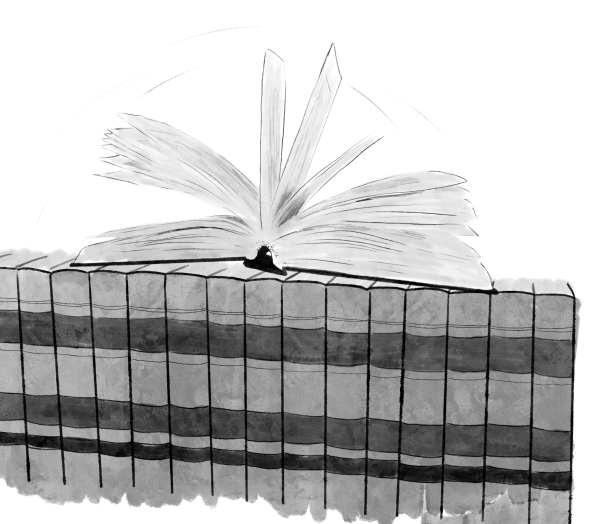



Benjamin Judah • Feb 13, 2022 at 1:50 am
Stumbled upon this article while searching for something else entirely. Scanned it until your alternative spelling of “Natzi” piqued my curiosity, which led to the mistake of actually reading the entire article. No offense sweety, but you are proof that most women should not write anything beyond romance fiction.
Anonymous Student • Jul 13, 2020 at 7:25 pm
yeah but tearing down statues of abolitionists and calling it peaceful is ridiculous. A slave named Fredrick Douglass who escaped and became an abolitionist had his statue ripped down. Tear down the right statues and learn history Antifa.
mary • Jul 3, 2020 at 10:20 pm
Very much enjoyed this article! As a black woman, I appreciate how you know exactly why these “monuments” and symbols need to be taken down. They even uphold systematic racism. Thank you for shedding light on this!
Benjamin Judah • Feb 13, 2022 at 1:52 am
I believe you mean ‘systemic racism’, not ‘systematic.’ The general blandness of your comment, your inability to spell such a common term, and your clumsy attempt to virtue signal by proudly proclaiming your high social status as a ‘black woman’ indicates you are either being paid to make such statements or you are a jew. Maybe both, who knows?